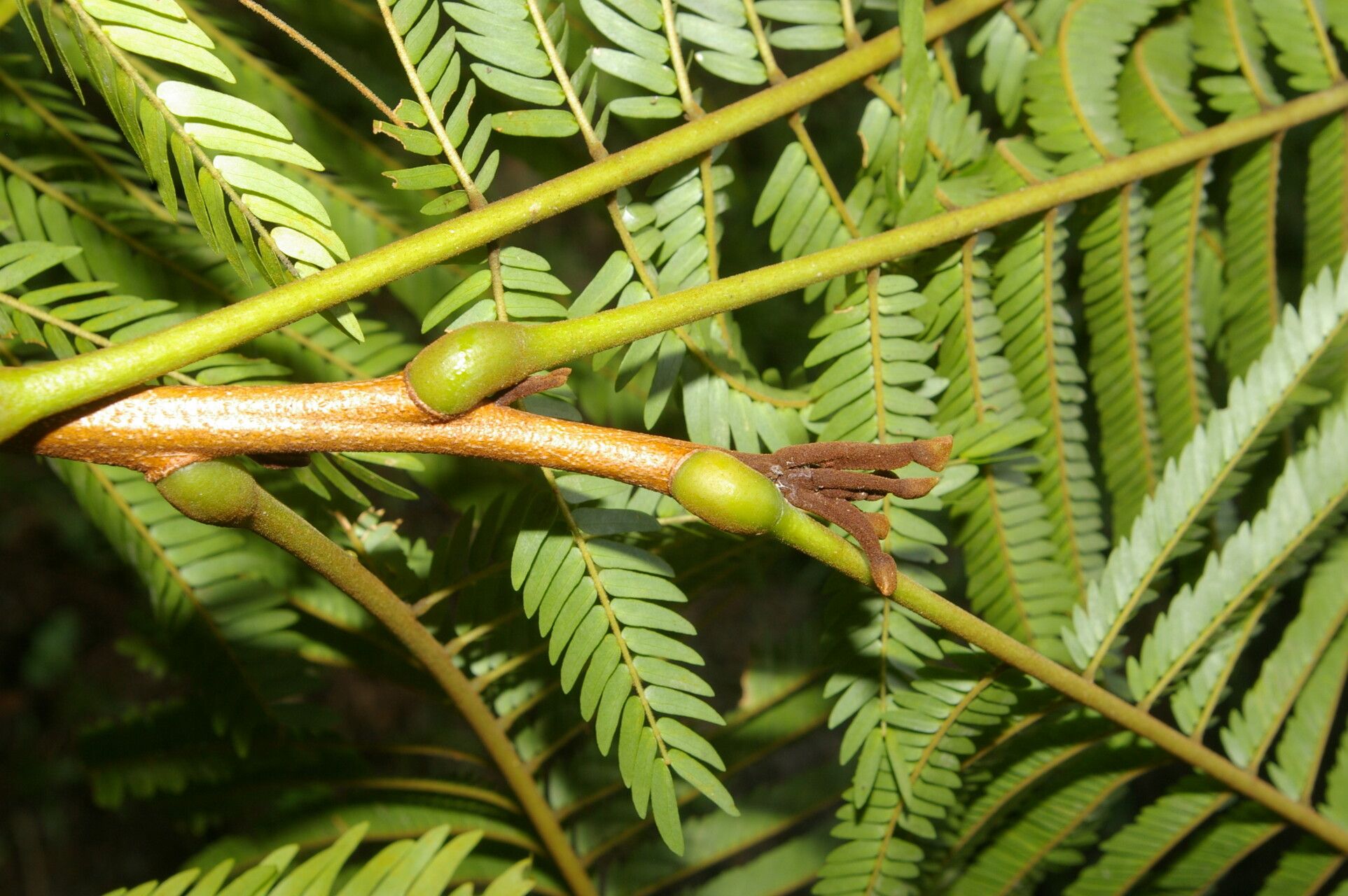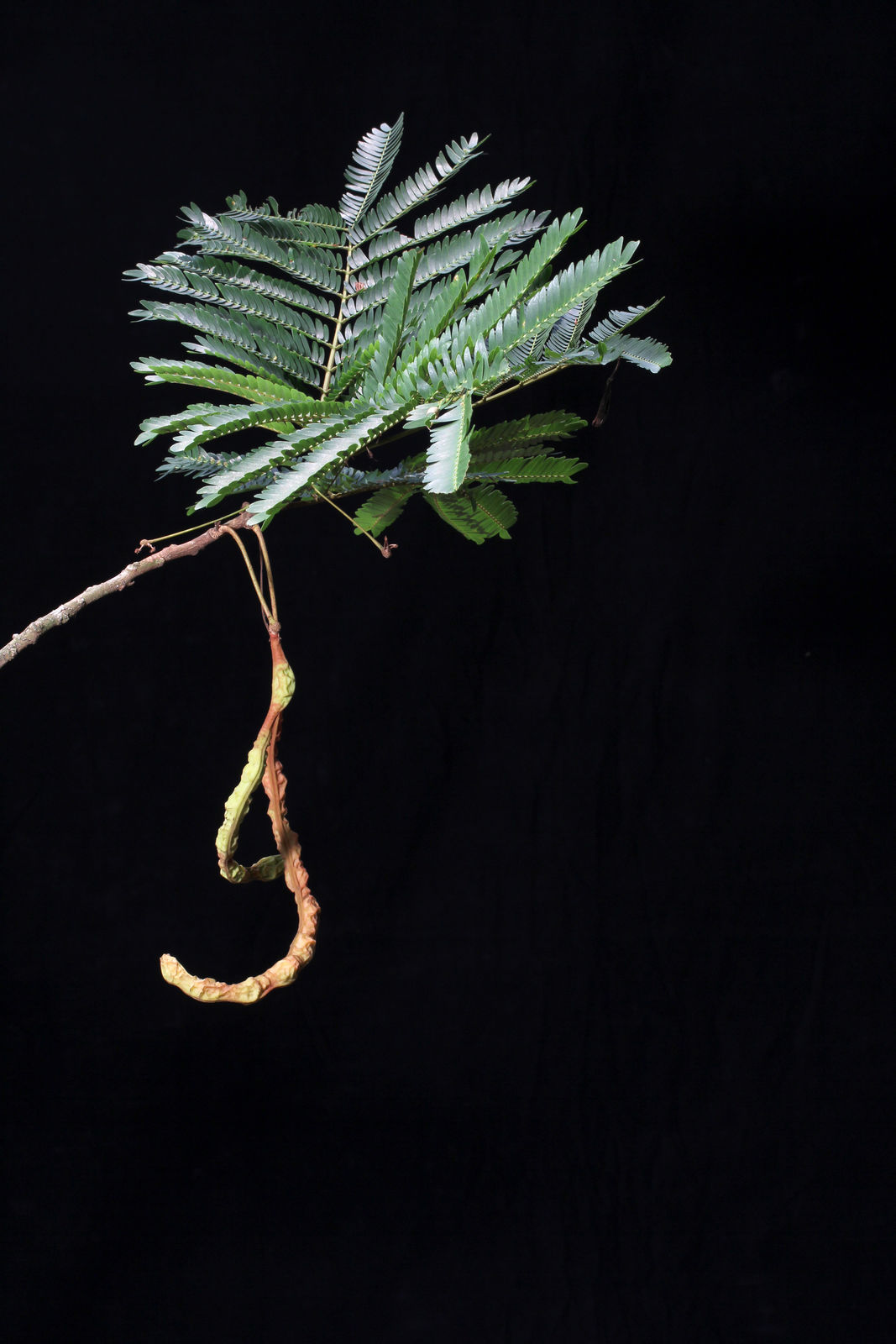False Tamarind
cojoba arborea
Also known as: ["False Tamarind","Wild Tamarind"]
Overview
A medium-sized deciduous tree native to the Americas, known for its attractive foliage and woody pods.
Benefits & Perks
["wildlife attractant (bees, butterflies, birds)","shade tolerant"]
Botanical Classification
| Phylum: | Magnoliophyta |
| Class: | Magnoliopsida |
| Order: | Fabales |
| Family: | Fabaceae |
| Genus: | Cojoba |
| Botanical Name: | Cojoba arborea |
Plant Characteristics
Basic Information
- Category: Trees
- Suitable Location: outdoor garden in warm climates, or large indoor container in cooler regions
- Suitable For:
- Is Weed: No
- Allergenicity: low
Environmental Needs
- Climate: {"temperatureRange":"15–35°C"}
- Hardiness: {"zones":"9–11"}
- Misting: rarely required, only if ambient humidity is very low
- Drainage: Fast-draining to prevent waterlogging.
- Soil Type: Well-draining potting mix with added perlite or sand for aeration.
Maintenance Level
- Maintenance Level: moderate
- Toughness Level: moderate
- Pruning Frequency: Annually in late winter or early spring before new growth begins.
- Pruning Intensity: Moderate; remove up to one-third of growth if needed.
Care Details
Ideal Sunlight Coverage:
Bright indirect light for 6–8 hours daily; adjust to partial shade in intense summer sun.
Sunlight Tolerance Tips:
Acclimate gradually to intense light to prevent scorching; place in filtered sunlight outdoors or near a south-facing window indoors.
Care Requirements
Care Difficulty
moderatemoderate
Sunlight
full sun to partial shade
Rotate plant weekly for even growth; use sheer curtains to filter harsh sunlight.
Watering
every 7–10 days during active growth, reduce in winter
Water thoroughly until it drains from the bottom, allow soil to dry between waterings, and avoid overwatering.
Soil
well-draining, loamy soil with some organic matter
pH: Slightly acidic to neutral (pH 6.0–7.0).
Ensure pots have drainage holes; avoid heavy clay soils.
Temperature
Prefers 65–85°F (18–29°C); tolerates mild fluctuations but avoids extremes.
Avoid placing near drafty windows; maintain consistent room temperature.
Fertilizing
every 4–6 weeks during growing season, none in winter
Fertilize only when actively growing; flush soil occasionally to prevent salt buildup.
Propagation
Methods
Stem cuttings in spring or early summer.
Step-by-Step Propagation Guide
- Take a 4–6 inch cutting, remove lower leaves, apply rooting hormone, plant in medium, maintain humidity, and keep warm.
Best Time: Spring or early summer when the plant is actively growing.
Environment
High humidity (70–80%), warm temperatures (75–85°F), and indirect light.
Medium
Well-draining mix of perlite and peat moss or cactus mix.
Hormone
Recommended to promote root development.
Timeline
Roots develop in 4–8 weeks; new growth appears in 2–3 months.
Tools Needed
Pruning shears, rooting hormone, small pots, plastic wrap or propagator.
Quick Tips
Use healthy, non-flowering stems; maintain consistent moisture without waterlogging.
Pruning & Repotting
Pruning Guide
Method
Selective thinning and heading back to maintain structure.
Pruning Plan
Shape the plant, remove dead/damaged growth, and encourage bushier form.
Tools
Pruning shears, sharp knife, disinfectant.
Checklist
Disinfect tools, prune during dormancy, remove dead wood, shape evenly.
Repotting Guide
Best Season
Early spring before active growth starts.
Pot Size
Increase pot size by 2–3 inches in diameter.
Method
Remove plant gently, trim roots if crowded, use fresh well-draining soil, ensure proper drainage.
Suggestions
Repot every 2–3 years or when roots outgrow the container.
Checklist
Check root bound status, prepare new pot, use fresh soil, water after repotting.
Advanced Care Tips
Watering Mastery
Watering Checklist
Check soil moisture, water deeply, ensure drainage, avoid wetting foliage.
How to Apply Water Properly
Water at the base of the plant, ensuring moisture reaches the root zone; water early in the day to minimize evaporation and allow foliage to dry.
Watering Schedule Tips
Water deeply once the top inch of soil feels dry; reduce frequency in winter to prevent root rot.
Soil Improvement
Add perlite or coarse sand to improve drainage; incorporate organic matter like compost for fertility.
Temperature Stress Management
Signs of Temperature Issues
Yellowing leaves, leaf drop, or stunted growth in response to sudden temperature changes.
Cold Stress
Slows growth, causes leaf discoloration, and may lead to root damage in prolonged cold.
Solution: Move to a warmer location, insulate roots with mulch, and avoid cold drafts.
Hot Stress
Wilting, leaf scorch, or reduced vigor due to excessive heat and dry conditions.
Solution: Provide shade, increase humidity, and water more frequently during heatwaves.
Fertilizing Guide
Fertilizing Checklist
Check growth phase, use diluted fertilizer, avoid winter feeding, flush soil periodically.
Fertilizing Method
Use balanced liquid fertilizer diluted to half strength every 4–6 weeks during growing season (spring/summer); cease in fall/winter.
Common Problems & Solutions
Toxicity Warning
Cats
Non-toxicCojoba arborea is not considered toxic to cats. There are no documented cases of adverse effects in felines from exposure to this plant.
⚡ Toxic If:
None
Dogs
Non-toxicCojoba arborea is not considered toxic to dogs. There are no documented cases of adverse effects in canines from exposure to this plant.
⚡ Toxic If:
None
Humans
Non-toxicCojoba arborea is not known to exhibit toxic properties to humans under normal circumstances. The plant has no reported adverse effects when handled or ingested.
⚡ Toxic If:
None
Frequently Asked Questions
Q: Is Cojoba arborea toxic to pets?
A: There is insufficient data on its toxicity to pets.
Q: Does Cojoba arborea produce flowers?
A: Yes, it produces small, yellowish-white flowers.
Q: How tall does Cojoba arborea grow?
A: It typically grows to a height of 15-25 meters.
Quick Reference
| Family: | Fabaceae |
| Care: | moderate |
| Light: | full sun to partial shade |
| Water: | every 7–10 days during activ |
Get Expert Care Tips
Download the Plantious app for personalized care reminders and plant identification!
Google Play App Store








